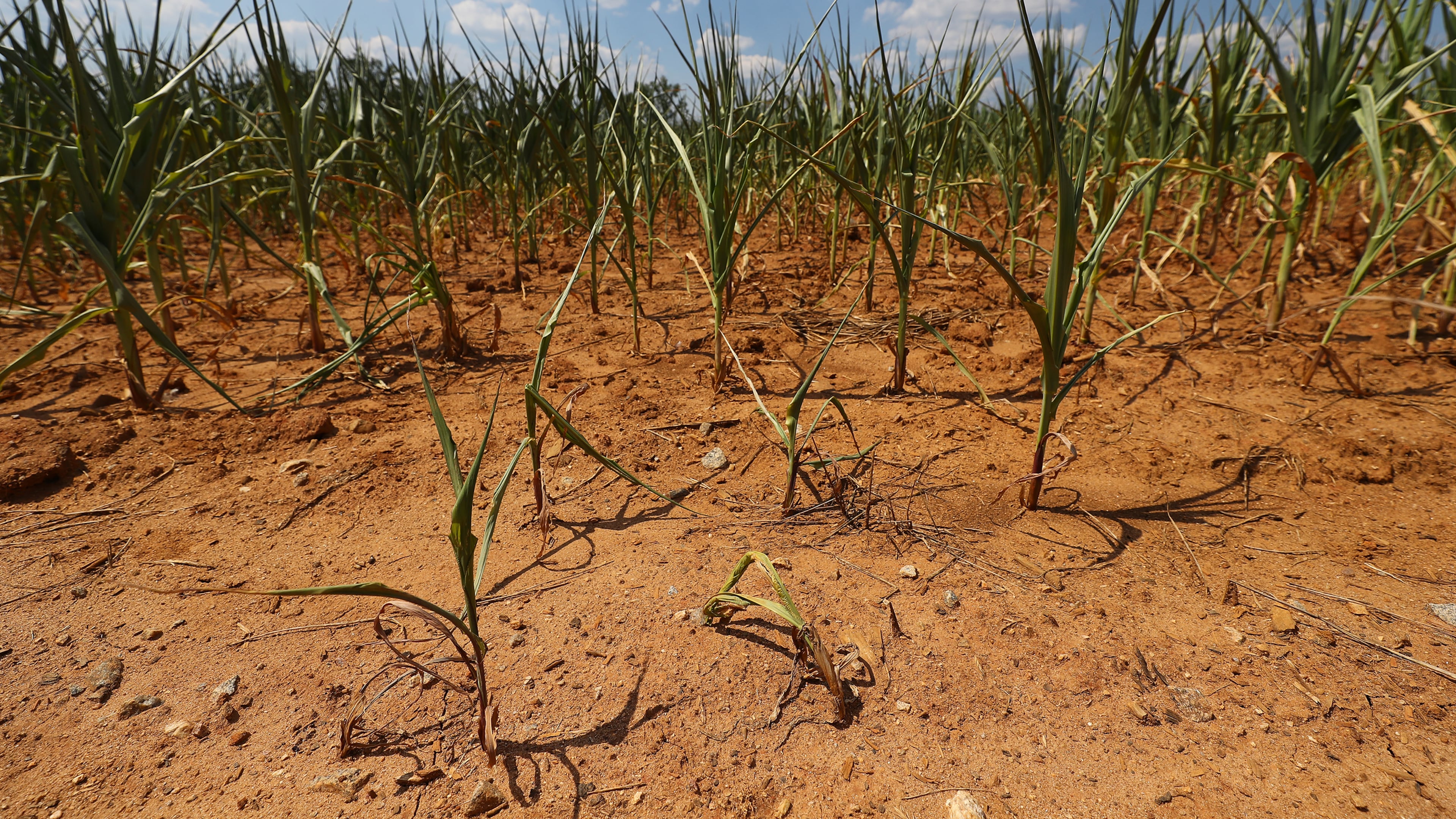Extreme heat, scant rain cause headaches for Georgia farmers

Lucy Ray has one word to describe how most fields of corn and hay an hour east of Atlanta in Morgan County look right now: “crispy.”
Weeks of above-normal temperatures with little rain has turned lawns brown around metro Atlanta, but the extremely hot, dry conditions are causing more serious problems on some Georgia farms, said Ray, a University of Georgia agriculture and natural resources agent.
The problem appears to be most acute for corn and animal forage crops in the northern half the state.

While many South Georgia farms have access to groundwater wells drilled into the Floridan aquifer to irrigate, those north of the vast coastal plain are generally more reliant on surface water and rainfall to quench their fields’ thirst. And when little rain falls, as has been the case for several weeks, the consequences can be dire.
Justin Williams, the co-owner and manager of WDairy LLC in Madison, about 60 miles east of downtown Atlanta, said his family-run operation grows rye grass, alfalfa and corn to feed their 1,750 dairy cows. But only about one-third of his farmland is under irrigation.
The rest, mostly corn, is at the mercy of what falls from the sky. Lately, he said rain has been nearly nonexistent, calling the recent hot and dry spell something he’s “never quite experienced before.”
“We rely on Mother Nature, but this year, those acres are not going to offer a productive crop, to say the least,” Williams said.

Before parts of Atlanta saw afternoon showers on Thursday, the city had received less than an inch of rain so far this month, according to NWS data, almost three inches less than the June average. Athens has not been much wetter, with only an inch and a half precipitation to date in June.
At the same time, brutal temperatures have sucked moisture from the soil.
Atlanta tied a daily record Wednesday when it hit 100 degrees, and highs so far this month have topped out an average of just under 91 degrees, according to National Weather Service (NWS) data. That’s well above the 87.1 degree daily high considered normal for June over the last 30 years. In Athens, 25 minutes north of Morgan County where UGA scientist Ray is based, highs and overnight lows this month have also been above average.
Pam Knox, an agricultural climatologist at UGA, said a persistent heat dome that parked over much of the continental U.S. is largely to blame. But so, too, is human-caused climate change, which is driving up temperatures across the globe. After enduring its hottest May ever measured, Earth has now experienced 12-straight months of record high global temperatures.
The heat and lack of rain is reflected in the latest U.S. Drought Monitor map released Thursday. On June 18, only 33% of Georgia was considered “abnormally dry.” This week’s map shows more than 69% of its land area is now experiencing those conditions. Another 25% of the state is facing more extreme “moderate drought,” up from only 1.5% a week ago.
On the ground, Ray said the effects are more severe than the maps indicate.
Fearing they won’t have enough grass to sustain their animals, Ray said some farmers are considering drastically culling their herds. Others are buying feed from outside producers, or dipping into their hay reserves, which are typically used to nourish animals during the fall and winter months.
Still, experts say it could be months before the extent of losses comes into focus.
Ray said if farms in her area were to get a “nice, steady inch (of rain) tomorrow, everybody would breathe a sign of relief.”
“But right now … we’re looking at some pretty big consequences if things don’t turn around,” she added.
There is a chance of rain in the forecast for the next several days and the federal government’s seasonal outlook does not project drought worsening in Georgia through September.
But longer-term, there are other reasons for concern. Global climate conditions known as La Niña are expected to materialize in the coming months. The phenomenon, which is characterized by cooler waters in the tropical Pacific Ocean typically brings warmer and drier conditions to the Southern U.S., especially in winter.
If the current hurricane season — which is forecast to be extremely active — doesn’t bring deluges to Georgia, farmers in the state could begin 2025 with rainfall deficits that could affect their yields in the New Year.
“That is way down the road, but it’s something to watch for,” said Knox of UGA.
A note of disclosure
This coverage is supported by a partnership with Green South Foundation and Journalism Funding Partners. You can learn more and support our climate reporting by donating at ajc.com/donate/climate/

